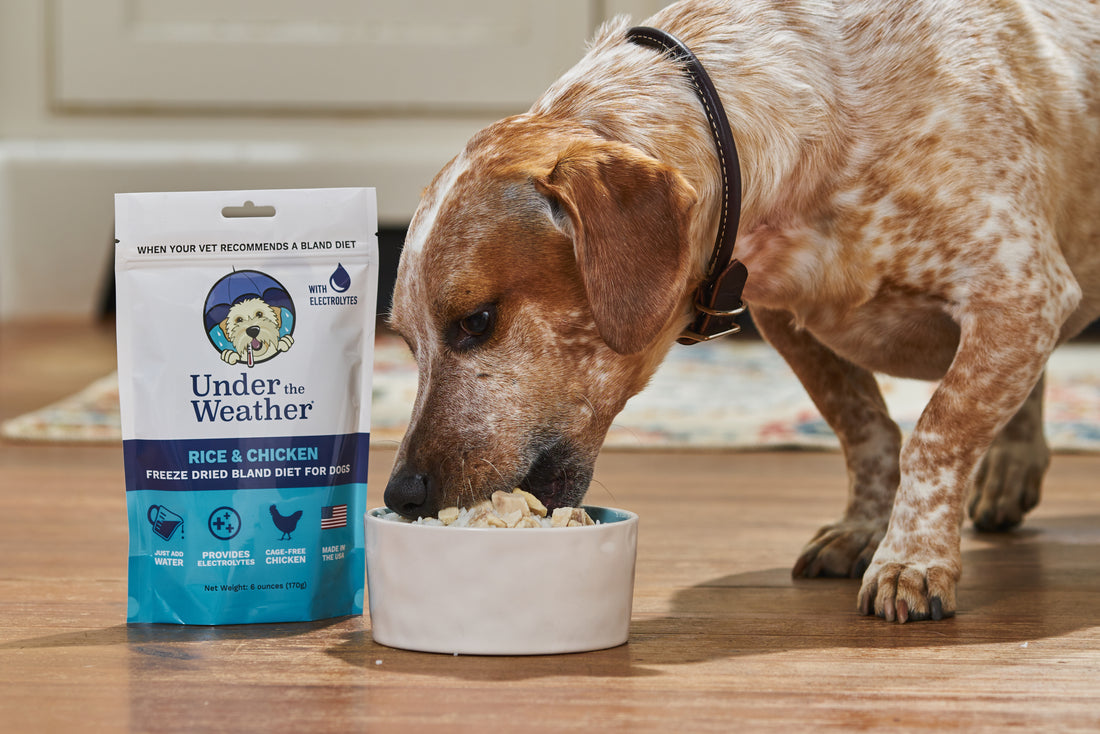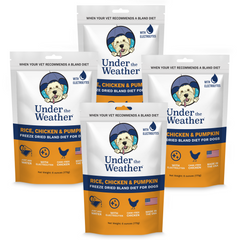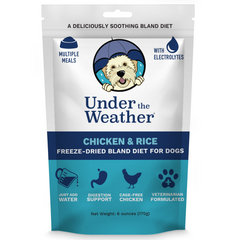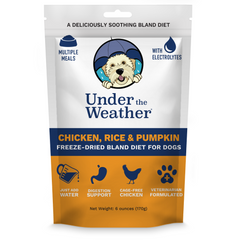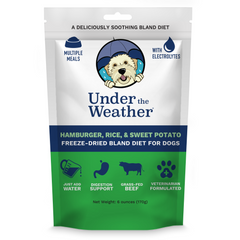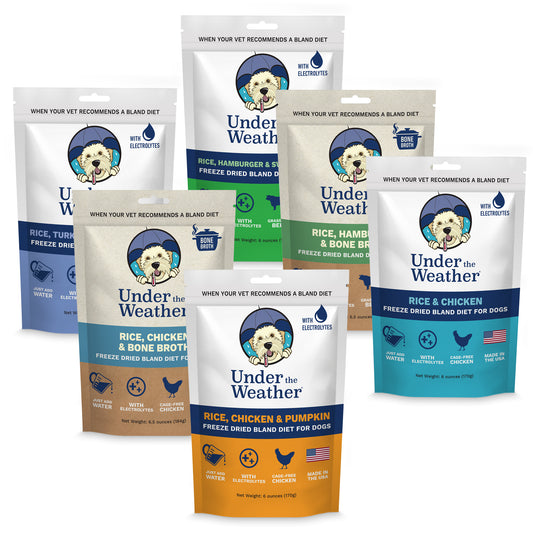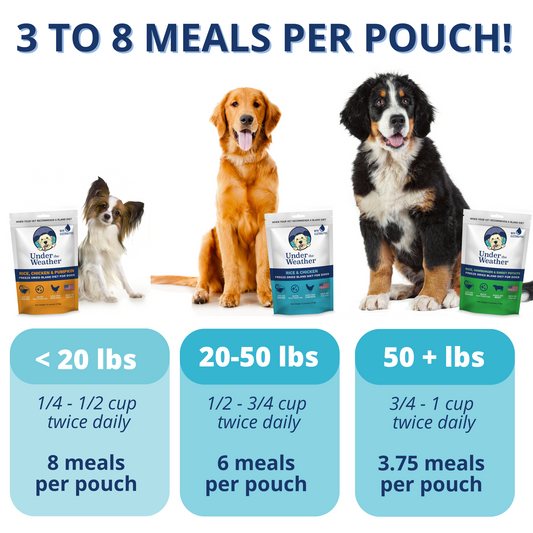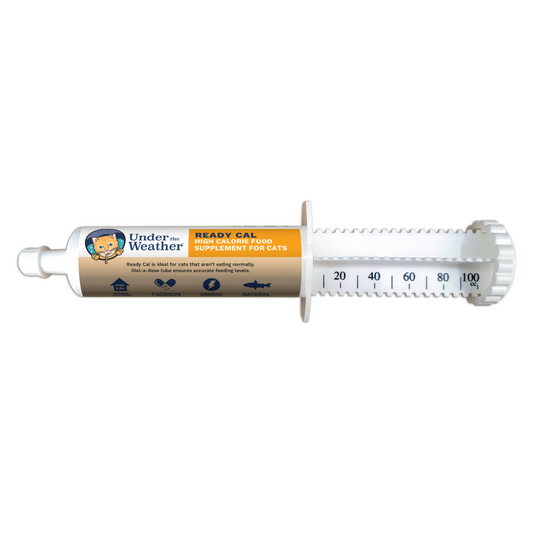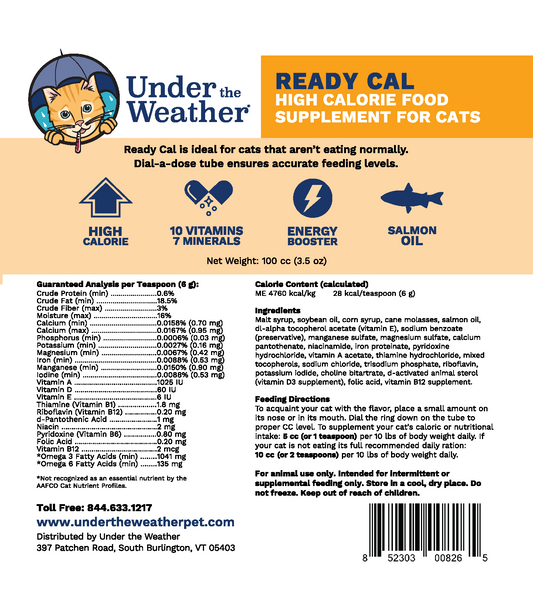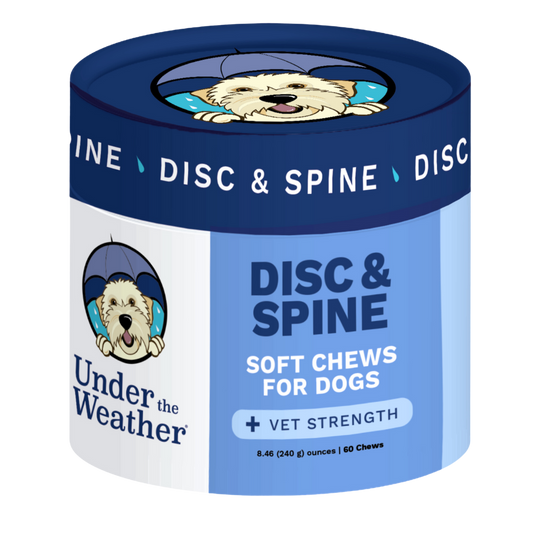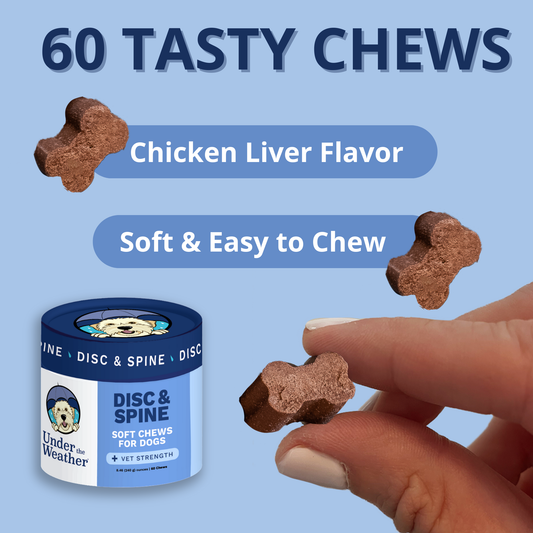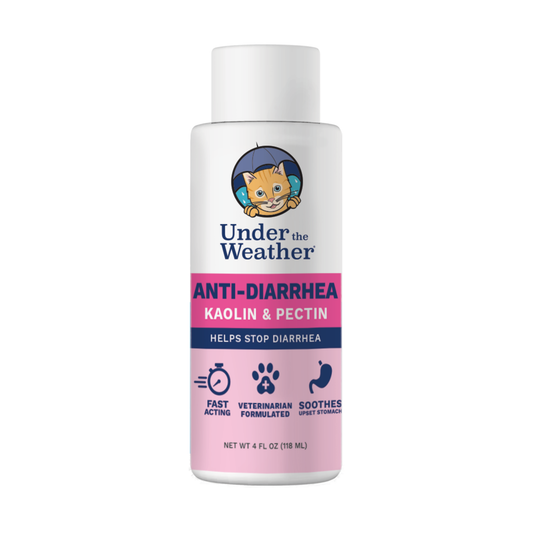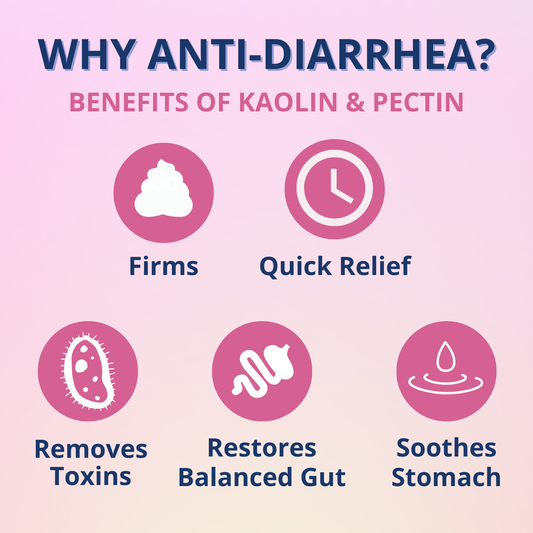Dogs have a remarkable ability to digest just about anything. But, even with the greatest care, dogs will occasionally eat something that doesn’t agree with them or they find themselves with an intestinal bug. Either way, you can usually expect bouts of vomiting or diarrhea. So before explaining what is a bland diet, what are the benefits and how to prepare a bland diet for dogs, it makes sense to briefly cover why your dog suffers from vomiting and diarrhea in the first place.
Why Is My Dog Vomiting?
Vomiting in dogs is not that uncommon when you consider the fact that they have a tendency to ingest just about anything. For this reason alone, eating something that doesn’t naturally agree with their normal digestive system such as grass, spoiled food, a baseball, a shoe…the list can be unfortunately endless. More often than not, the cause of vomiting is typically not too concerning as the act itself will dispel whatever is causing the problem.
Although far less common, vomiting can also be a sign of more serious conditions such as kidney issues, diabetes, cancer, and complications from an infectious disease.
Related: Why is My Dog Vomiting?
For these infrequent occurrences, veterinarians generally recommend a “bland diet” which will soothe and settle their digestive systems until normal appetite, digestion and bowel movements are restored.
Why Does My Dog Have Diarrhea?
As opposed to vomiting, diarrhea typically indicates complications that have progressed further along the gastrointestinal tract. Common reasons for diarrhea include sudden changes to the dog’s normal diet, food allergies, infections from viruses, bacteria or parasites (parvovirus, salmonella, and giardia are some examples) or simply stress or anxiety.
Related: Causes of Diarrhea in Dogs
What is a Bland Diet?
As a result, vomiting and diarrhea are clear indications that your dog is suffering from a digestive condition. For these occurrences, veterinarians generally recommend a “bland diet” which will soothe and settle their digestive systems until normal appetite, digestion and bowel movements are restored. Think of it as a method of “restarting” your dog’s digestive system.
A bland diet typically consists of mild, whole foods that are easy to digest, soothes the digestive system and contains ingredients that help eliminate diarrhea and stops vomiting. It generally involves a boiled, lean meat such as chicken breast, hamburger or turkey accompanied by a starch such as white rice or sweet potato.
How To Make a Bland Diet for Dogs
Preparing a Bland Diet
A bland diet consists of foods that are easy to digest, are soothing to the digestive system and contain ingredients that help restore a solid stool. For dogs, it generally involves a boiled lean meat such as chicken, hamburger or turkey; and a starch such as cooked white rice or sweet potato.
To prepare a bland diet, use ground meat or whole meat chopped into small bites. Boil the meat until cooked, then drain. Prepare the white rice and mix together in a 50/50 or 65/35 mix of rice to meat. Do not add any oils or seasonings to the mixture. Be sure to cool to room temperature before feeding.

Feeding Your Dog a Bland Diet
When starting a bland diet for your dog, most veterinarians will recommend withholding food or water for 2-3 hours after they vomit or have diarrhea to let their systems settle down. If the problems stop, water can be started in small amounts. If the water doesn’t trigger more vomiting or diarrhea after another 2-3 hours, you can start feeding the bland diet.
How Much Bland Diet for Dogs
Start with a very small amount, such as one tablespoon or a small meatball sized portion. If there is no vomiting after 2 hours, you can offer a little more. Gradually the quantity can be increased and the frequency increased. For example, instead of 2 tablespoons every 2 hours, you can gradually increase the amount to maybe a ½ cup then a cup every 3 or 4 hours.
How Long to do Bland Diet for Dogs
You’ll want to continue with this diet for 2-3 days after the vomiting or diarrhea have stopped and your dog’s stool has returned to normal. Then start mixing in your dog’s normal food, a little more each day over 5 days until he is back on his normal food.
Related: Need a Bland Diet for Your Sick Dog?
A More Convenient Option
If you’re a busy pet parent and don’t have the time to cook a bland diet, or don’t feel comfortable in the kitchen, there is another option. Under the Weather makes a freeze-dried bland diet product made with premium meats and free of gluten, meat by-products or additives of any kind.
Are You Prepared for the Next Time Your Dog Gets Sick?
Because they are made completely with freeze-dried premium ingredients, these ready-to-go bland diets will be there for you when you need it the most. Simply add hot water to one of our many flavors and you will have an instant meal that will sooth your dog’s tummy and stop the vomiting or diarrhea in its tracks.

A Short-Term Solution
Because they are made with wholesome ingredients, most dogs love eating a bland diet so you might be tempted to keep them on this food for good. We’ll be the first to tell you that it’s important to know that a bland diet is NOT a nutritionally-complete diet. Although it will provide the calories and nutrients to help your dog recover, your furry friend will need the additional vitamins and nutrients typically found in quality dog food that is meant to be served as a typical meal. If you have the desire to keep your dog on a homemade diet long-term, it should only be done under the supervision of a veterinary nutritionist.
Also, if the diarrhea or vomiting isn’t resolved with a bland diet, or if your dog also has symptoms like fatigue or abdominal pain, consult your veterinarian.
Our bland diets are made with no meat by-products, antibiotic-free and no hormones added! They are also gluten-free, have no chemicals or dyes, and made right here in Vermont, U.S.A.!

Products related to this article:
- Chicken & Rice
- Chicken & Rice with Pumpkin
- Hamburger, Rice with Sweet Potato
- Turkey, Rice with Sweet Potato
- Chicken, Rice & Bone Broth
- Hamburger, Rice & Bone Broth
Every Sale Supports a Shelter Pet. Learn More.
Created in Vermont. Learn More.
If you suspect your pet is sick, call your vet immediately. For health-related questions, always consult your veterinarian, as they have examined your pet, know the pet's health history, and can make the best recommendations for your pet.

